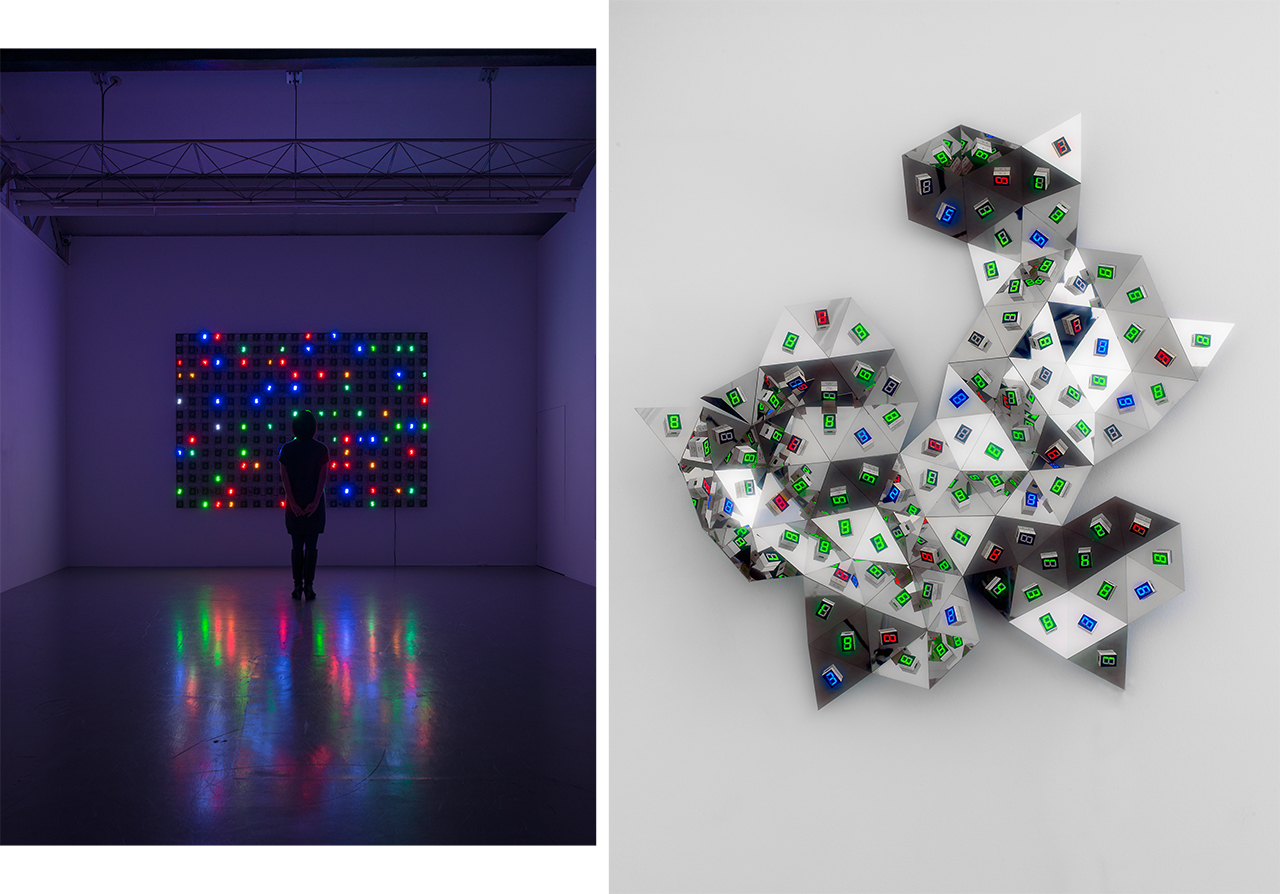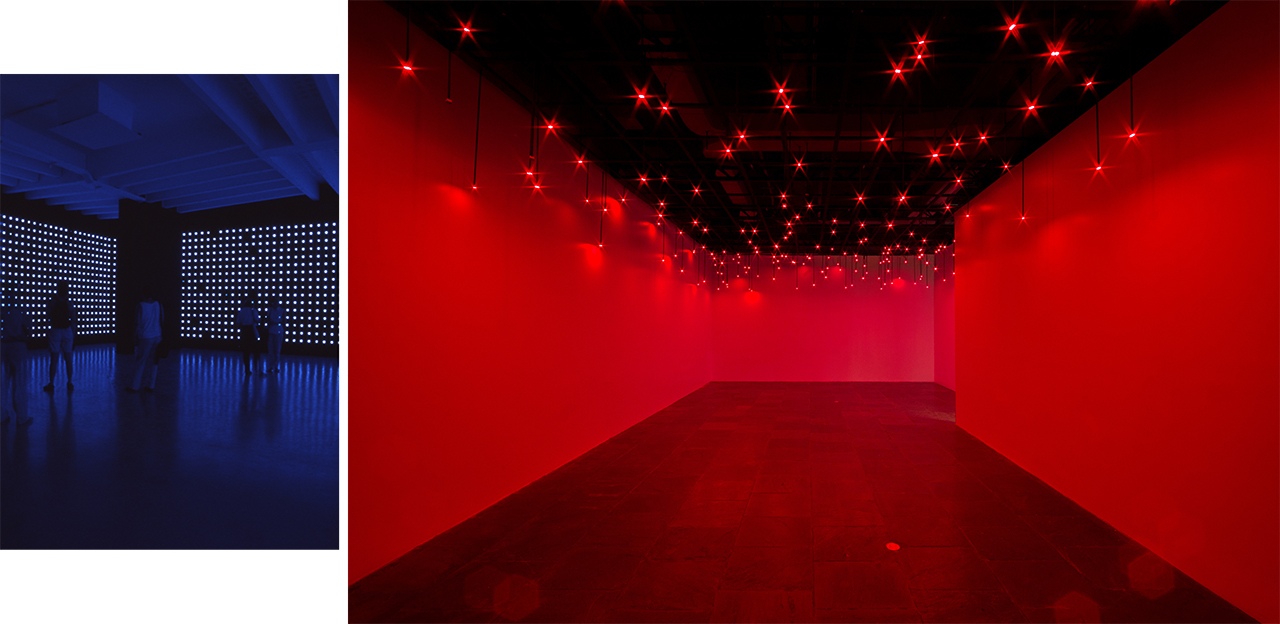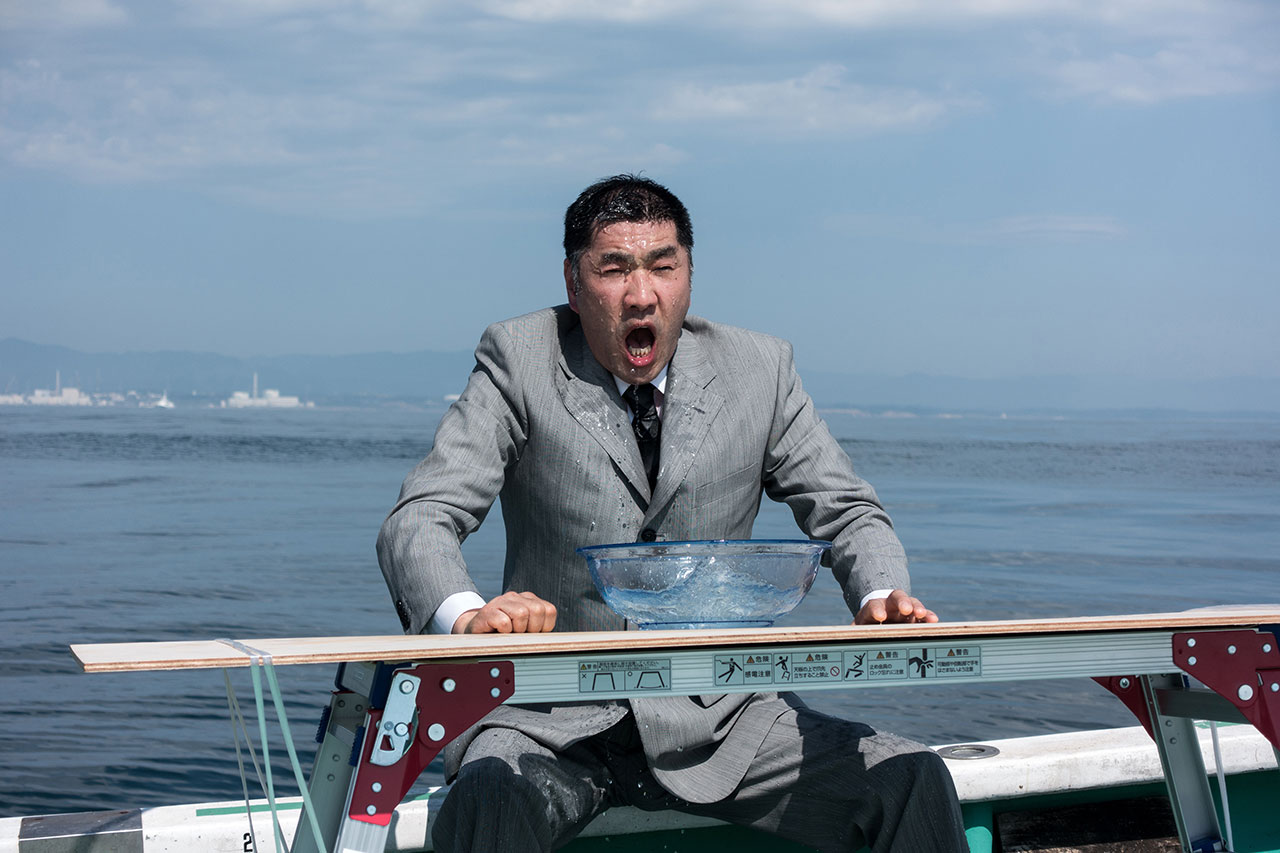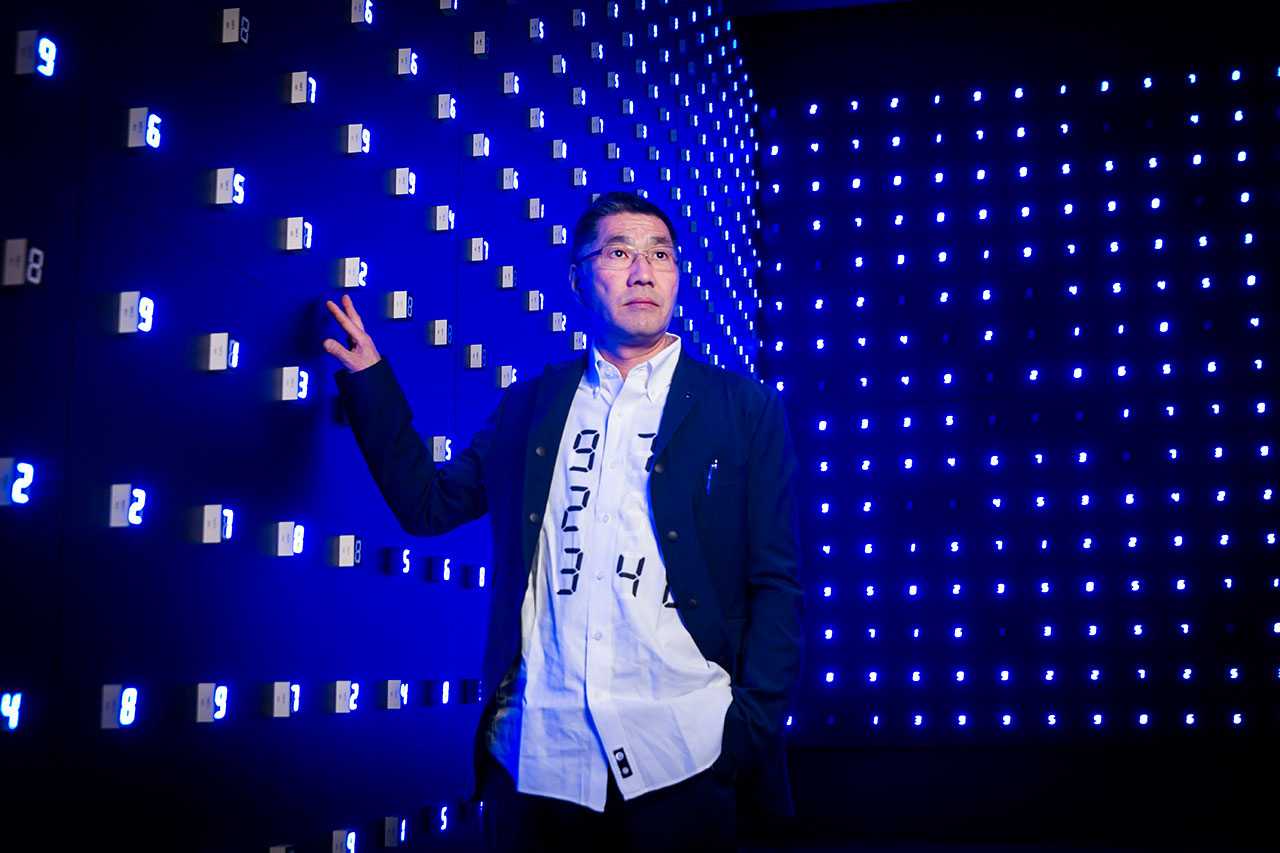News feed

Japanese artist Tatsuo Miyajima walks through his incredible installation Mega Death at the Museum of Contemporary Art, Sydney
Credit: Shot on an iPhone
Tatsuo Miyajima’s voice is the only thing that punctuates the considerable void created when his installation, Mega Death, ticks over into its regularly scheduled oblivion: “Enjoy! Enjoy darkness!”
Miyajima, one of Japan’s most renowned contemporary artists, is speaking at the unveiling of Tatsuo Miyajima: Connect With Everything, the artist’s largest career survey to date open from today at the Museum of Contemporary Art as part of the Sydney International Art Series exhibitions. At first, the directive that witnesses to the installation ‘enjoy’ an abrupt vacuum of light and sound seems a little counterintuitive, and sure enough it isn’t long before the space becomes illuminated with the anaemic glow of smartphone screens. But in the brief moments beforehand, it’s easy to see why Miyajima’s work has the ability to create profoundly moving experiences that far exceed the imagined possibilities of his humble materials: light, earth and water.
It’s only appropriate then that this summer thousands of visitors to the exhibition will try to capture their encounter with Miyajima’s work using their phones, and each resulting picture will invariably fall short of documenting the lived experience.

Clockwise from left: Tatsuo Miyajima’s Pile Up Life No. 2; Warp Time with Warp Self No. 2 (detail), and Floating Time
Credit: (Courtesy of the artist) Ken Adlard; Nobutada Omote and SCAI THE BATHHOUSE
Miyajima’s predominant medium is the light-emitting diode, or LED, which appears in the form of digital counters called ‘counter gadgets’ presented in either isolation or en masse. On first glance, the counters resemble the dreaded digital alarm clock. However, closer interrogation of Miyajima’s sculptures and room-scale installations reveals the artist’s interrogation of the cyclicality of life, death and rebirth – a tenet borrowed from his engagement with Buddhist thought – as each gadget counts down from nine to one in a constant cycle performed at varying speeds.
The liminal ‘zero moment’ before each counter is reset, most notably with Mega Death, comes in the form of an impenetrable darkness. Depending on your experience, that darkness can either be read as nihilistic or something entirely redemptive – allowing a moment for reflection before, sure enough, the counters light up again and the life cycle resumes.

Clockwise from left: Miyajima’s Counter Coal, detail and installation view at Kunsthalle Recklinghausen, Germany; and Time Train to the Holocaust
Credit: (Courtesy of the artist) Ferdinand Ulrich and SCAI THE BATHHOUSE
Born in 1957, Miyajima began his practice studying oil painting, a pursuit he eventually abandoned for performance art because, to hear him tell it, he didn’t want to inherit the western legacy of oil painting. A desire to pioneer new forms of expression and “talk to the world” lead him to early experiments in performance, including works that saw him either film peoples’ reactions to him yelling in public spaces or lie prostrate on the ground at the first signs of rain, creating ephemeral silhouettes recalling two-dimensional sculptures. He soon desired to remove himself from the performance altogether, which lead him to working with customisable lights, first in red and green and eventually blue and white as the LED technology developed.
In those counters, Miyajima says he found a cipher for larger philosophical themes of life’s cycles, change and transformation, all of which resonated with his threefold guiding principle: “Keep changing, connect with everything and continue forever.”

Left to right, Miyjima’s Life (Rhizome) No. 2 and Diamond in You No. 8
Credit: Nobutada Omote and HG Gaul
That thesis underpins each of the works in Connect With Everything, the first survey of the artist’s work in the Southern Hemisphere and the largest exhibition to date during his thirty years of practice. Curated by Rachel Kent, who included Miyajima’s Deathclock in an exhibition occasioning the reopening of the MCA in 2012, the retrospective encompasses his sculptural works, large scale installations, paintings, photographs, works on paper, never before exhibited sketches and a series of performance videos that extrapolate on the existential countdown motifs central to his practice.
Small-scale sculptures like the Pile Up Life series reference the form of stupas, dome-shaped Buddhist shrines moulded from dry earth and inlaid with counters as a memorial to the loss of human life across Asia. Other works like Warp Time with Warp Self bathe viewers in coloured light and use mirrors, some distorted beyond recognition, to position the viewer inside the work while illustrating the artist’s ‘art in you’ concept – reminding us of both art and time’s centrality in our own lives. Other works invite viewers to move throughout the space. Counter Coal comprises a mammoth mountain of black coal littered with red LED counters, around which another work, Time Train to the Holocaust, circulates – a model train bearing small blue counters on an infinite loop mimicking the same train network used to transport both coal and countless humans to the concentration camps of Nazi Germany.

Mega Death at the Japan Pavilion, 48th Venice Biennale, 1999 and Arrow of Time (Unfinished Life) at The Metropolitan Museum of Art
Credit: (Courtesy of the artist) Shigeo Anzai and Thomas B. Ling
In the adjoining double-height gallery, the memorial qualities of Miyajima’s work culminate in Mega Death: 2,500 blue LED lights wrapping three walls of the room to create a constellation of his counters which are periodically extinguished in unison at random intervals, plunging audiences into sudden darkness. Another room-scale installation, Arrow of Time (Unfinished Life) consists of ceiling mounted red LED counters. The effect – amplified by large cushions on which to recline – is considerably more meditative, compared with Mega Death’s awe-inducing, disorienting and surprisingly visceral experience.
“Mega Death is my critique of 20th century history,” says the artist of this new iteration of the work – the largest to date – which first represented Japan at the Venice Biennale in 1999. “My personal understanding of the century is that it was a time when people suddenly died in great numbers. You have these moments where lots of people perished.” The artist continues that his work recalls the mass loss of human life over two World Wars, at Hiroshima and Auschwitz, through terrorism and unimaginable disasters, the Fukushima Daiichi nuclear disaster and resulting tsunami.
The latter is referenced again in Miyajima’s Counter Voice video works, in which the artist performs spoken word countdowns while dunking his head into water near the sites of nuclear disaster, the Morura Atoll, Hiroshima and Fukishima. In doing so, the artist strikes a delicate balance between a certain black comicality, while evoking the resilience and endurance of the human spirit.

The artist appears in a still from Counter Voice in the Water at Fukushima
Credit: Courtesy of the artist
Miyajima says his first encounters with death were when he was twice hospitalised as a child, before visiting the memorial at Hiroshima as a teenager. That proximity to death not only moved the artist to confront his own mortality, but to despair for humanity.”We should fight the utter darkness within us that enables us to do these things to one another,” he says. It might sound overwhelming – the oddly luminescent spectre of death and arbitrary violence – but the resulting experience of Connect With Everything is actually something quite uplifting. How better to fight darkness than with light?
In another more serene work, 100 Time Lotus, LED lights encircled in glass bob delicately in a 17 metre long pond installation littered with lotus leaves. Unique to its exhibition at the MCA, the work also contains gold fish, who swim amongst the digital counters in complete oblivion. The amnesiac fish are RSPCA approved, I’m told, and even if they weren’t it’s not like they’ll remember their temporary brush with one of contemporary art’s giants before repeating the same cycle again and again and again.

Tatsuo Miyajima stands alongside his installation Mega Death in situ at Connect With Everything at MCA Sydney
Credit: Courtesy and © the artist, photograph by Anna Kučera
Tatsuo Miyajima: Connect with Everything will appear at MCA Sydney from November 3 until March 5, 2017. More information is available here.
Tile image: Nobutada Omote
Cover image: Shigeo Anzai










